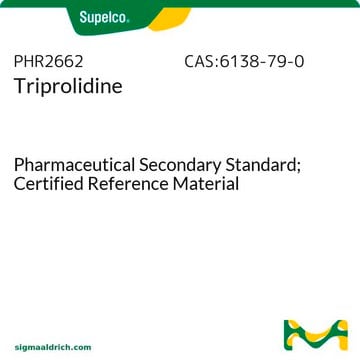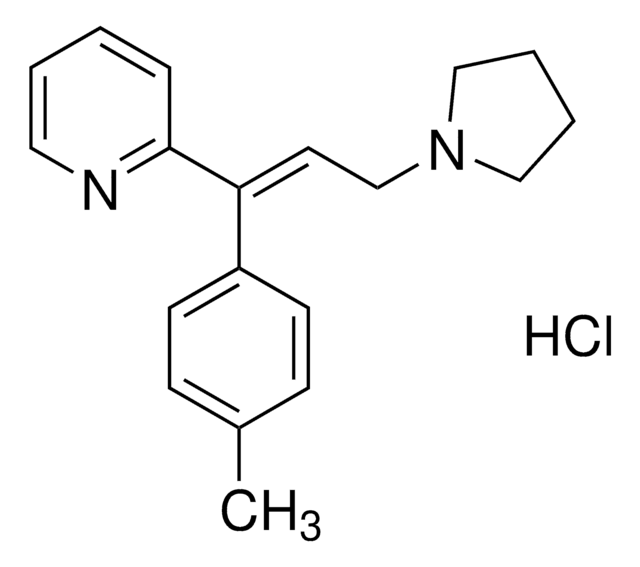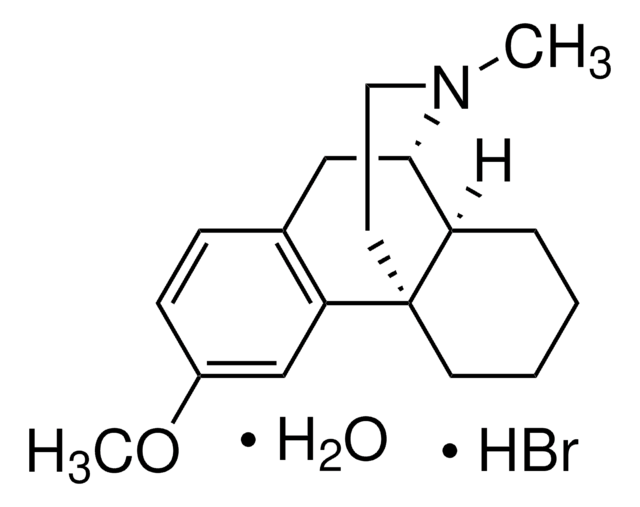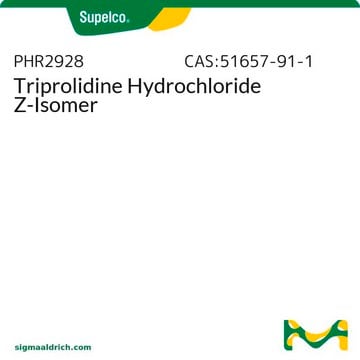T6764
Triprolidine hydrochloride
≥99%
Synonym(s):
(E)-2-[3-(1-Pyrrolidinyl)-1-p-tolylpropenyl]pyridine hydrochloride, trans-2-[3-(1-Pyrrolidinyl)-1-p-tolylpropenyl]pyridine hydrochloride
About This Item
Recommended Products
Assay
≥99%
solubility
alcohol: soluble 1 in 1.5 of solvent
chloroform: soluble 1 in less than 1 of solvent
H2O: soluble 50 mg/mL, clear, colorless to yellow
originator
GlaxoSmithKline
storage temp.
2-8°C
SMILES string
CC(C=C1)=CC=C1/C(C2=NC=CC=C2)=C\CN3CCCC3.Cl
InChI
1S/C19H22N2.ClH/c1-16-7-9-17(10-8-16)18(19-6-2-3-12-20-19)11-15-21-13-4-5-14-21;/h2-3,6-12H,4-5,13-15H2,1H3;1H/b18-11+;
InChI key
WYUYEJNGHIOFOC-NWBUNABESA-N
Gene Information
human ... HRH1(3269)
Looking for similar products? Visit Product Comparison Guide
Application
Biochem/physiol Actions
Features and Benefits
Preparation Note
related product
Signal Word
Warning
Hazard Statements
Precautionary Statements
Hazard Classifications
Acute Tox. 4 Oral - Eye Irrit. 2 - Skin Irrit. 2 - STOT SE 3
Target Organs
Respiratory system
Storage Class Code
11 - Combustible Solids
WGK
WGK 3
Personal Protective Equipment
Certificates of Analysis (COA)
Search for Certificates of Analysis (COA) by entering the products Lot/Batch Number. Lot and Batch Numbers can be found on a product’s label following the words ‘Lot’ or ‘Batch’.
Already Own This Product?
Find documentation for the products that you have recently purchased in the Document Library.
Customers Also Viewed
Our team of scientists has experience in all areas of research including Life Science, Material Science, Chemical Synthesis, Chromatography, Analytical and many others.
Contact Technical Service















